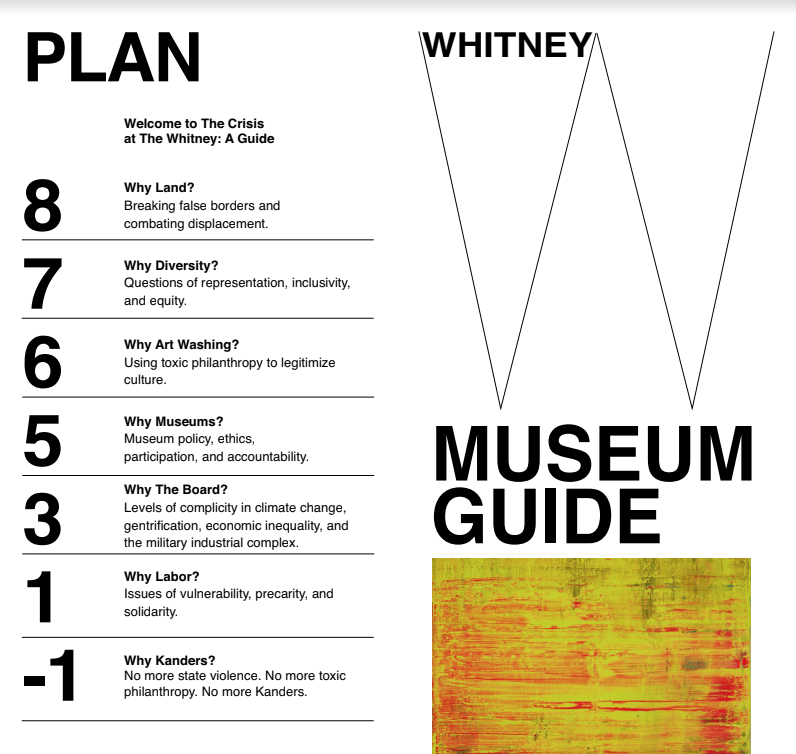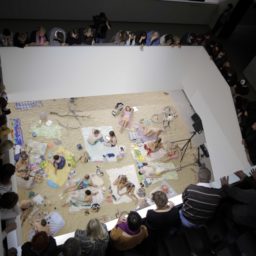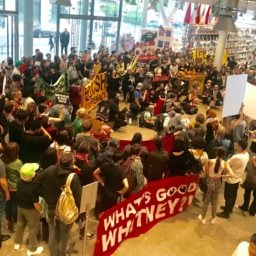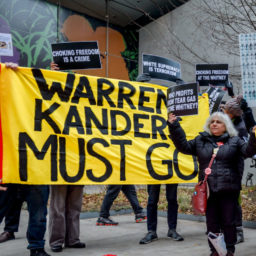Stop by a Whitney Museum brochure kiosk this month and you may find a booklet that tells an unexpected story of the institution. An activist collective called (D)IRT, or the (De)Institutional Research Team, recently planted an alternate version of the Whitney Museum Guide among the institution’s normal booklets.
Designed to look exactly like the museum’s own material, the (D)IRT document educates visitors about the “Crisis at the Whitney” and the controversy surrounding Warren B. Kanders, vice chair of the museum’s board who, it states, is a symbol of “toxic philanthropy.” Kanders is the majority owner and CEO of Safariland, a company that manufactures tear gas used against protesters around the world, including against migrants on the US/Mexico border.
“We invite you to learn why nearly 100 Whitney museum staff members wrote a letter calling for the consideration of Kanders’ resignation, new ethical and moral guidelines for trustee participation, and a museum-wide forum to address staff concerns,” the document reads. Where the museum’s typical brochure runs down the exhibitions on display on each of its eight floors, (D)IRT’s version has provided points outlining their argument. Each section is headed by a question: “Why Diversity?” “Why Art Washing?” “Why Labor?” “Why Kanders?”

A detail from (D)IRT’s alternative guide to the Whitney Museum. Courtesy of (D)IRT.
“(D)IRT’s alternative museum guide was designed to inform museum visitors of the way labor, museum policy, and art relate to museum governance and Whitney Board Vice Chairman Warren Kanders,” the collective’s members, who prefer to be addressed as a whole, wrote to artnet News.
The creation and distribution of the guide was in solidarity with the “nine weeks of action” organized by another collective, Decolonize This Place (DTP). (D)IRT members have been present at each of DTP’s demonstrations, including the most recent protest, held at the museum last Friday. 500 guides were distributed to museum visitors that day.
The collective is comprised of anonymous artists, educators, academics, museum workers, and nonprofit workers united in their aims to “reimagine the way cultural institutions are run,” according to its mission statement.
“We understand and have experienced firsthand that despite the recent influx of media coverage and public scrutiny, the call for cultural institutions to develop ethical standards is evergreen,” the group says. “Although (D)IRT is firstly a research group, we are continually exploring ways of making the information we dredge up more tangible, relevant, and accessible by supporting and collaborating with new and existing groups that have similar interests.”
The Whitney declined to comment.










